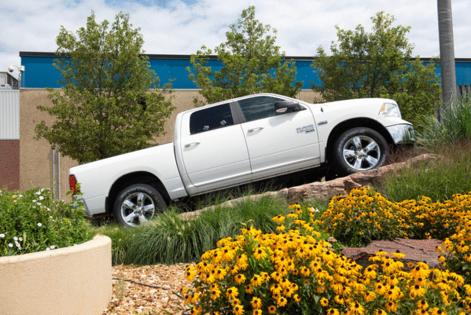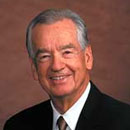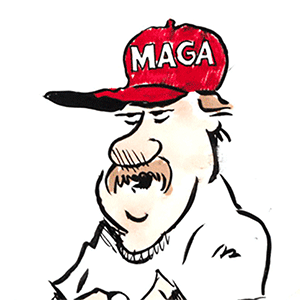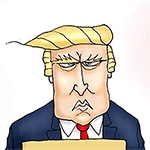Trump extends auto tariff offsets, details duties on medium- and heavy-duty trucks
Published in Business News
The White House on Friday extended to five years an arrangement that eases tariffs on automakers assembling vehicles in the United States and provided details on a 25% tariff on medium- and heavy-duty trucks set to take effect Nov. 1.
The extension of offsets that allow automakers to reduce what they pay in tariffs on imported car parts previously had been scheduled to sunset after two years. The step is a victory for automakers that have lobbied to mitigate the fallout from record-level import taxes. President Donald Trump's proclamation also directs the Commerce Department to establish a similar offset for the medium- and heavy-duty trucks, as well as for auto and truck engines.
For some companies like Chrysler parent Stellantis NV that builds medium-duty Ram trucks in Mexico, the actions are expected to be mixed. Others, such as Ford Motor Co., have said such decisions will help level the playing field.
The tariffs on medium- and heavy-duty trucks follow an investigation that began in April under Section 232 of the Trade Expansion Act, which allows for import taxes on goods critical to national security.
The probe focused on Class 3-8 medium- and heavy-duty trucks that weigh more than 10,000 pounds, as well as parts. It suggested a “small number” of foreign manufacturers make up most of U.S. imports due to “predatory trade practices.” In addition to the levy on trucks, buses will be subject to a 10% tariff.
Senior administration officials say the duties will boost domestic manufacturing, jobs and plant usage without increasing prices because of existing production, an offset program and other policies like reducing regulations. But the tariffs expose a new class of vehicles built by the Detroit Three to the levies. They’re already facing the duties on light-duty vehicles, many of their parts, and inputs like aluminum and steel.
In April, the Trump administration announced a relief measure for automakers that manufacture and sell in the United States. That allowed automakers to offset part of a 25% tariff imposed on imported parts. Under that measure, automakers could claim an offset worth up to 3.75% of the manufacturer’s suggested retail price of U.S.-assembled vehicles. The offset would fall after one year to roughly 2.5%, and then be eliminated the following year.
Under Friday's proclamation, the 3.75% offset would continue to 2030. That will give manufacturers more time to adjust their supply chains before seeing the full impact of the 25% parts levies. For months, companies like General Motors Co. and Ford have pushed for relief.
"The most important thing is that it gives you input cost certainty and stability," Glenn Stevens, executive director of the Detroit Regional Chamber's MichAuto mobility arm, said of extending the 3.75% offset until 2030. That extension will help automakers feel more comfortable making some large investment decisions, he said, and plan a little further into the future.
There are early indicators that "things are starting to settle" around tariffs and the auto industry following many rapid shifts through the early months of the administration, Stevens said. Automakers, suppliers and others feel like the lines of communication are open now with the administration, he said, and the administration has a better understanding of the companies' ' complex supply chains. But there still is much to be sorted out — most notably negotiations over the U.S.-Mexico-Canada trade agreement.
GM referred comment to the Alliance for Automotive Innovation, a lobby group for most major automakers, which didn't immediately have comment on the proclamation. The Detroit News also left requests for comment with Ford and Stellantis that weren't immediately returned.
The offset program for U.S.-assembled medium- and heavy-duty trucks, as well as U.S.-assembled engines, is expected to mirror the light-duty program.
The new tariffs on medium- and heavy-duty trucks also give duty-free treatment for trucks and parts compliant with the USMCA trade agreement until the Commerce Department can calculate tariffs on only the non-U.S. content. Buses won't be given USMCA relief.
An analysis from East Lansing consulting firm Anderson Economic Group this week estimates U.S. automakers through July have paid $6.45 billion in tariffs this year on autos and auto parts from suppliers and assembly plants in Canada and Mexico. Using July figures to forecast through October, that could be as much as $10.6 billion so far. And those figures don’t factor in tariffs paid on aluminum and steel or imports from Europe and Asia.
“There is no way to keep $10 billion in tariffs from affecting consumer auto prices,” Patrick Anderson, the group’s CEO, wrote in the analysis. “It is a very focused, unambiguous indicator that Ford, GM, Stellantis, Honda, Toyota, Volkswagen and other automakers that make use of production facilities in Mexico and Canada are being severely burdened with tariff costs.”
Meanwhile, automakers like Ford, which produces 80% of the vehicles it sells in the United States within the country — including all of its profit-heavy Super Duty pickups — have celebrated the inclusion of medium- and heavy-duty trucks in the tariff policies, saying exclusion gives competitors assembling the trucks in a foreign country an unfair advantage.
Plus, companies like GM building light-duty trucks in Mexico and Canada were facing a tariff, while their heavy-duty versions were not. In addition to assembly in Flint, GM builds medium-duty trucks in Oshawa, Ontario.
Ford is planning to launch Super Duty production at its Oakville Assembly Complex in Ontario next year, emphasizing supply for Canadian and international markets and freeing capacity at Kentucky Truck Plant for domestic demand.
Tariffs on medium- and heavy-duty trucks will work in tandem with trade deals reached with individual countries and regions. So, for example, imports from Japan and the European Union would see the lower 15% duty called for in their agreements rather than the 25%.
Ford CEO Jim Farley has said the deal with Japan saves rivals, including Toyota Motor Corp., thousands of dollars per vehicle over models made in the United States, given Japan’s lower labor costs and currency advantages.
Toyota sells medium and heavy-duty trucks in the United States under its Hino Motors subsidiary. Hino primarily builds its trucks at the company's Mineral Wells facility in West Virginia.
In response to tariffs, automakers have slashed profit expectations and production outlooks for the near term. They, however, mostly have resisted major price increases, though Ford did hike prices on its Mexico-built vehicles.
Detroit-based GM said in July that it expects tariffs to cost the company between $4 billion and $5 billion this year. Ford projected a hit to adjusted operating profit by $2 billion, and Stellantis NV predicted a $1.7 billion impact.
GM's Chevrolet brand assembles some but not all of its Silverado HD vehicles at the automaker's Oshawa Assembly plant in Ontario, Canada. The company also builds some of those models, plus the Sierra HD, at its Flint Truck plant.
Stellantis exclusively builds its Ram 2500 and 3500 trucks at the Saltillo Truck Plant in Coahuila, Mexico.
The United States imported about $20.8 billion worth of medium and heavy-duty trucks, or roughly 246,000 finished vehicles, in 2024, according to federal data. Nearly $20 billion worth of the imports came from Mexico and Canada.
(Washington Correspondent Grant Schwab and Staff Writer Summer Ballentine contributed.)
©2025 www.detroitnews.com. Visit at detroitnews.com. Distributed by Tribune Content Agency, LLC.












Comments